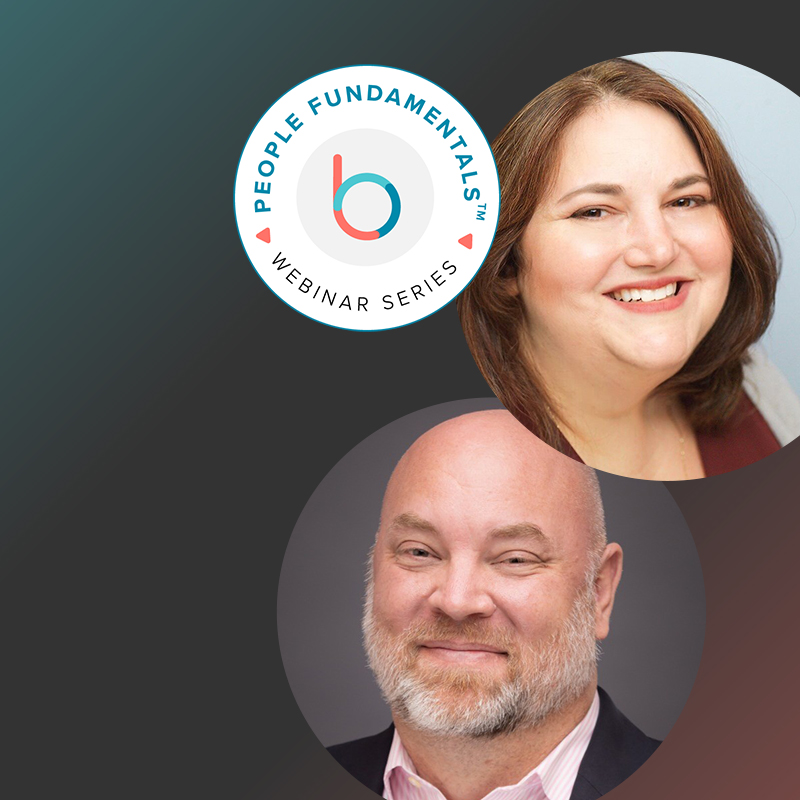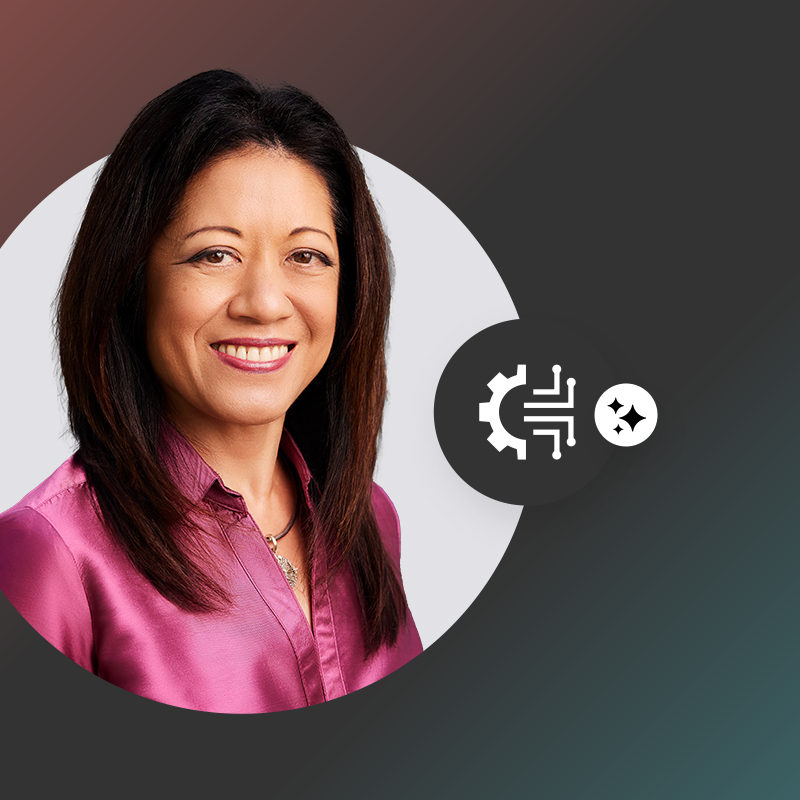The rise of AI is widening gaps in productivity, performance, and trust—and HR leaders are the ones who must close them.
“We’re living through one of the most disruptive periods from a technology standpoint. But with intention and connection, AI can become a force for good,” Dan Riley, co-founder of RADICL, shared during HR’s AI Advantage: Driving Workforce Transformation for Better Business Results, a webinar moderated by Jamie Aitken, VP of HR Transformation at Betterworks.
The session also included Michelle Gouldsberry, senior content marketing manager at Betterworks; Brandon Sammut, chief people officer at Zapier; and Nick Haap, director of talent management and continuous listening at KeHE Distributors.
Together, they explored how HR leaders can guide their organizations to not just manage AI adoption, but to lead it with purpose. Here are a few key insights from the conversation to help HR leaders turn uncertainty into action.
The productivity divide is also a retention crisis
Organizations are facing a paradox: Their most AI-fluent employees are also the most likely to leave. These individuals are reaping the benefits of AI in their daily work by improving speed, creativity, and decision-making. But they also tend to be more anxious about the future, particularly if they perceive their organization isn’t keeping up.
“The single most eye-opening finding is this: that eight of every ten high performers—quite often, the AI superstars—are actively job hunting,” said Michelle.
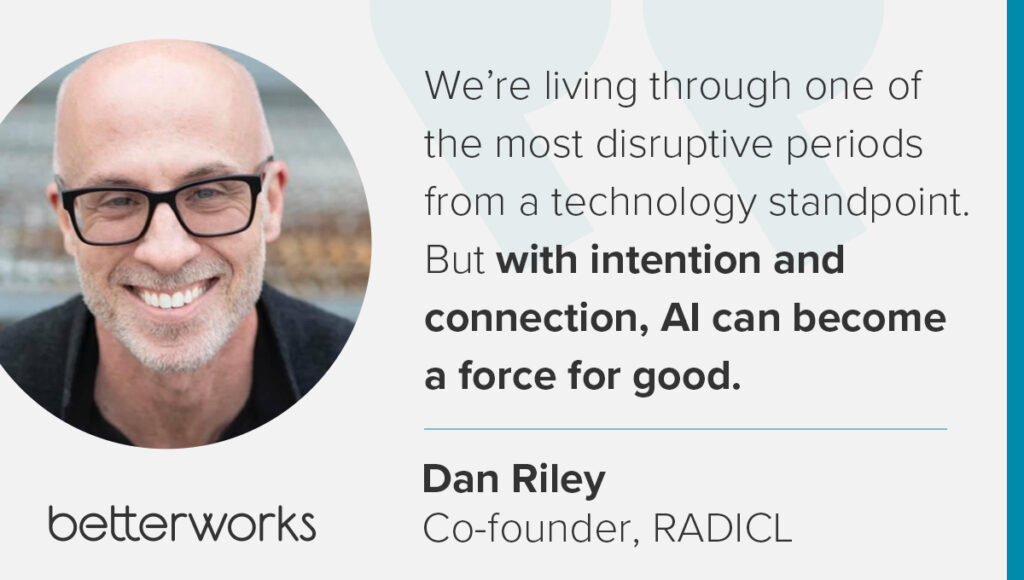
Dan noted that while the statistic hits hard, it isn’t surprising. “Often those high performers, those who are early adopters, they also tend to be the first who continue to be aggressively looking forward and aggressively establishing their career journey forward,” he said. He emphasized that companies must act decisively to keep those people engaged. “You don’t want your best people … to be always looking elsewhere because they don’t believe that their company’s keeping up.”
Brandon agreed, adding that early AI adopters now view their organizations with a more critical eye: “If you look inside your own organization, knowing what you know now as an early adopter, and you have concerns about where the organization is really thinking ahead, has a really compelling game plan for the future … that makes you think a different way about how much more investment you want to make into that organization,” he said.
Haap described AI adoption itself as a signal of change readiness. “Those who embrace a disruptive technology like AI are just more likely to be prepared for change,” he said. In other words, retaining future-ready talent requires companies to be future-ready themselves.
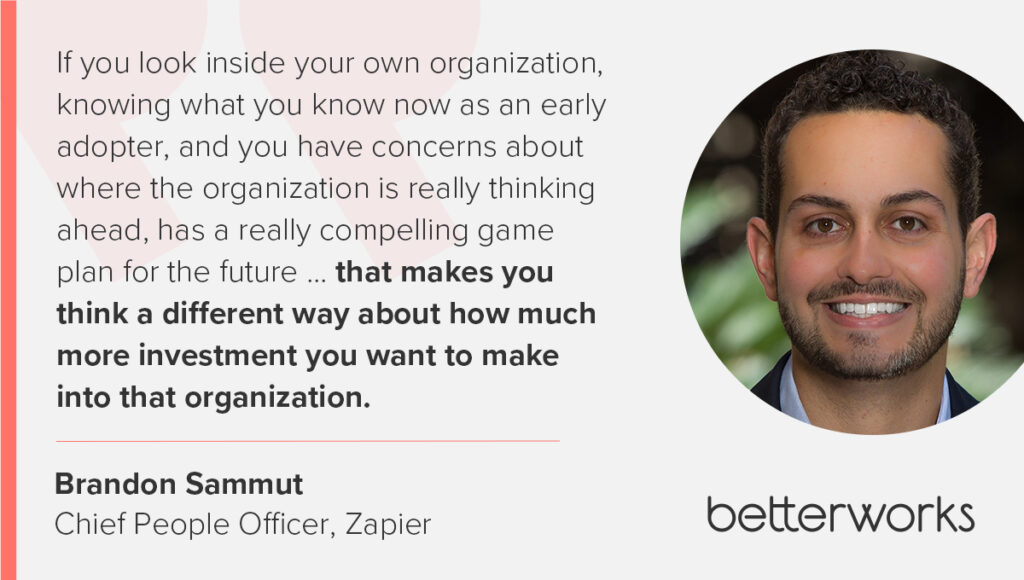
Managers are the linchpin of equitable AI adoption
The panelists stressed that managers are essential to scaling AI across organizations. The research revealed that 84% of AI power users want help identifying development opportunities, mapping career paths, and pursuing new roles, all areas where AI can assist, but where managers must lead.
“Managers are vital to the future of work. AI doesn’t replace them, but it amplifies their impact by automating routine tasks. AI frees managers to focus on uniquely human roles like coaching, guiding skills development, and driving innovation,” Jamie said.
Nick connected effective management with deeper team performance: “Managers who connect personally with their employees are rated three times more effective,” he said. AI can help offload administrative tasks, giving managers more capacity to focus on relationships and development.
Dan warned against assuming that simply adding more tech would solve engagement gaps. “Most organizations, most don’t have a technology problem. It isn’t a lack of technology, a lack of AI tools that we have access to. What they have is actually, how are we going to use it? Problem, a strategy problem, using it with intentionality,” he said.
HR must lead the strategy. Not just oversee the HR tech stack
Throughout the session, all speakers reinforced the idea that HR must lead AI strategy, not just administer it.
“Most organizations don’t have a technology problem. They have a strategy problem,” Dan said. Without clear, intentional communication about AI’s role in the business, employees will draw their own (often fearful) conclusions, and innovation will stall.
Brandon described how Zapier’s support team lead successfully helped her team navigate AI-driven change by being transparent from the start: “She shared a very specific vision for how she thought that could work. She showed a very specific expectation. She said twelve months from that, our average handle time for a support ticket, which is one of their core productivity metrics, basically needs to go down by half or even two-thirds. We will figure it out together,” Brandon recalled her saying.
The emphasis on collaboration and clarity helped the team not just adapt but thrive. “Because they figured it out, those folks are also now paid at the top decile of the market,” Brandon added.
The lesson for HR leaders: Strategy must come first, and it must be co-created and communicated in ways that foster trust, not fear.
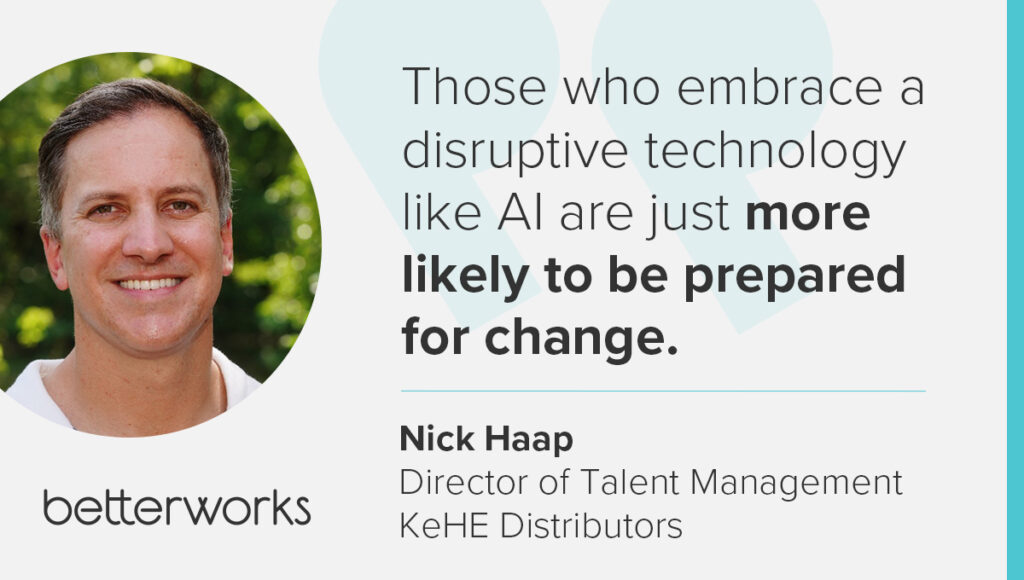
The future of human potential in an AI-powered world
As the conversation shifted to the future, panelists expressed cautious optimism.
Dan envisioned AI becoming an integral thought partner for every employee. “I do believe it will continue to allow us to spend less time managing the work and more time doing the work that matters,” he said.
Brandon highlighted AI’s potential to lift more people, not just a select few: this. For people who are early in their careers or even underperforming, intelligent use of AI “can be like rocket fuel for their opportunity.”
Yet through it all, the panelists agreed that a personal touch must stay at the center of transformation. “Let’s remain human through all of it. It doesn’t replace the beautiful opportunity of human connection. It just helps amplify it,” Dan urged.
Want to learn more? Watch the on-demand webinar.
Is your workforce AI-ready?


